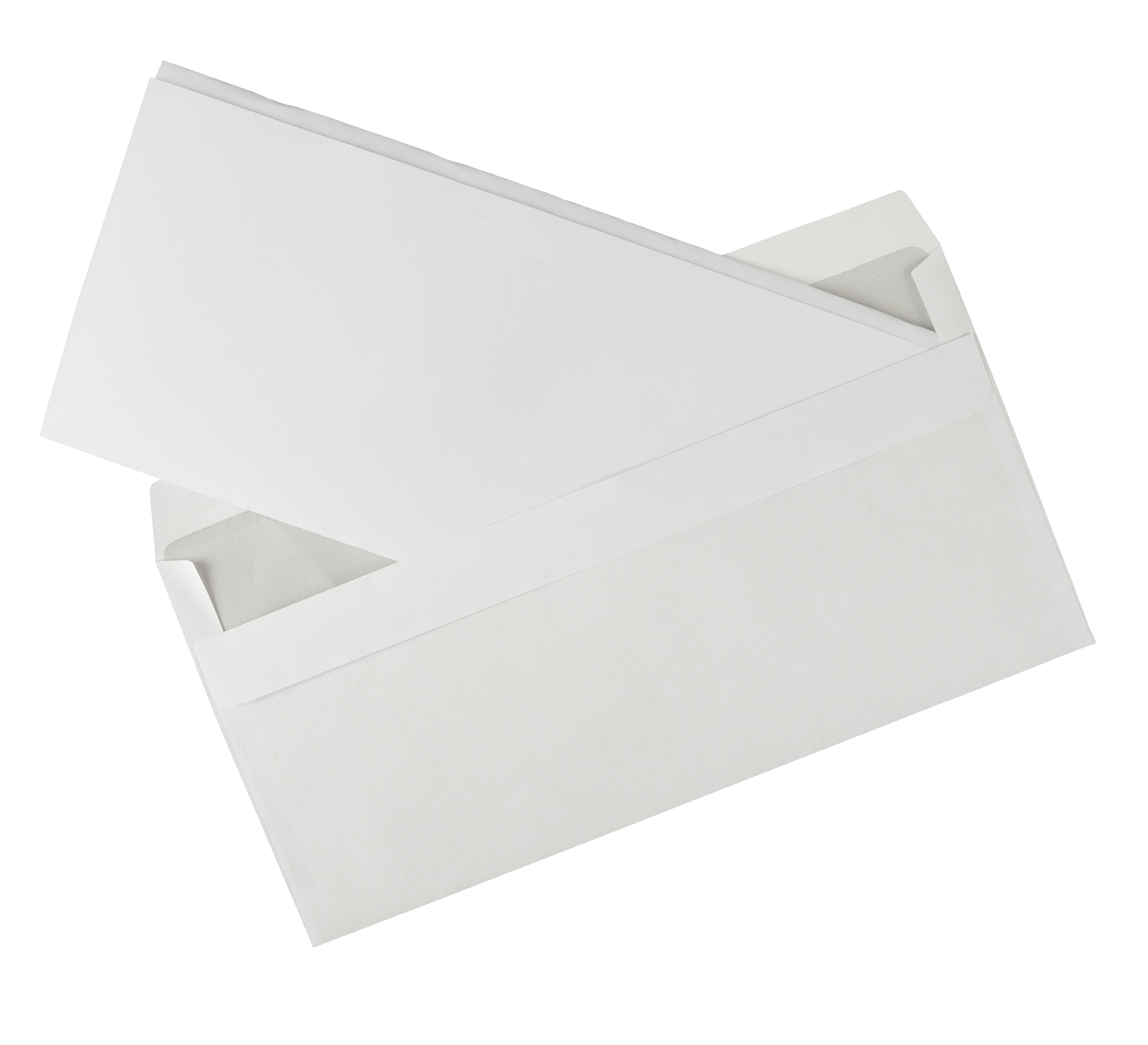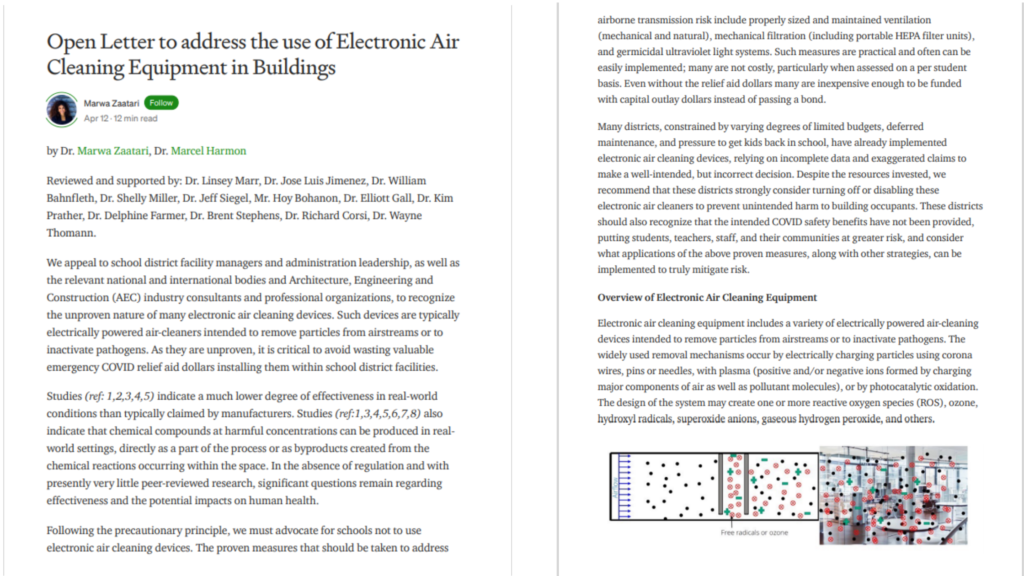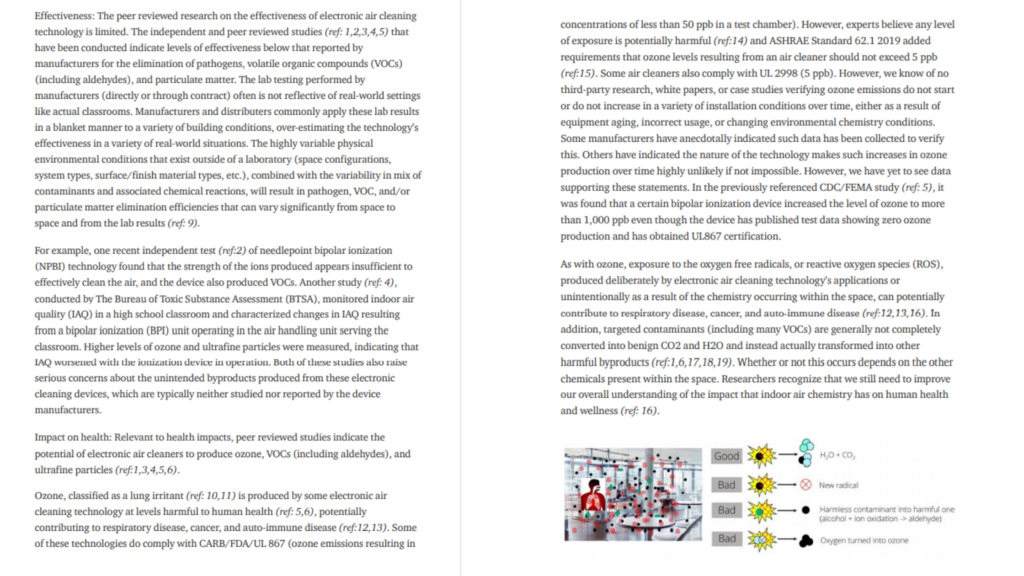Open Letter to address the use of Electronic Air Cleaning Equipment in Buildings

In an open letter, Dr. Marwa Zaatari – eminent Indoor Air Quality expert and Member of the Board Of Directors at U.S. Green Building Council – advocates caution when specifying air purification devices. She warns that many schools are “relying on incomplete data and exaggerated claims to make a well-intended, but incorrect decision.”

She highlights the general lack of regulations and standards for both the manufacturing and testing of electronic air cleaning technology. This has resulted in a marketplace “that some liken to the ‘wild west,’ making it a challenge for most engineers and consultants to discern fact from fiction, let alone school district facilitators, administrators, and board members.”

Dr. Zaatari emphasizes that proven measures “include properly sized and maintained ventilation (mechanical and natural), mechanical filtration (including portable HEPA filter units), and germicidal ultraviolet light systems.” Such measures are practical, easily implemented, and not costly.
Rensair’s patented air purifier is one such solution, offering hospital-grade air purification at commercial prices and backed by 3rd party independent validation from world renowned laboratories. Apart from the relatively low cost of the unit per person protected, specifiers should also consider running costs, as the units can even pay for themselves.
The Rensair unit uses only 160 – 220W, depending on the airflow level. This is equivalent to a modern day fridge-freezer found in most residential kitchens. Using Rensair can significantly reduce energy costs for business premises. In cold climates, any intake of outdoor air must be heated. Since Rensair air purifiers are so effective at cleaning the air, the intake of fresh, outdoor air can be reduced, thereby saving on ventilation and heating bills. Similarly, in hot climates, less fresh air means less energy on ventilation and air conditioning.
